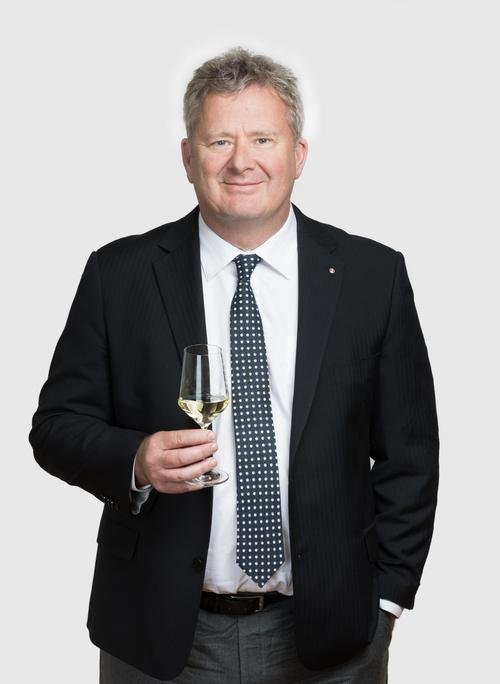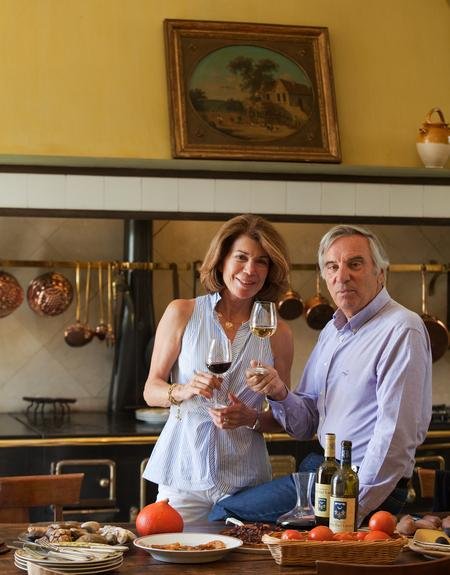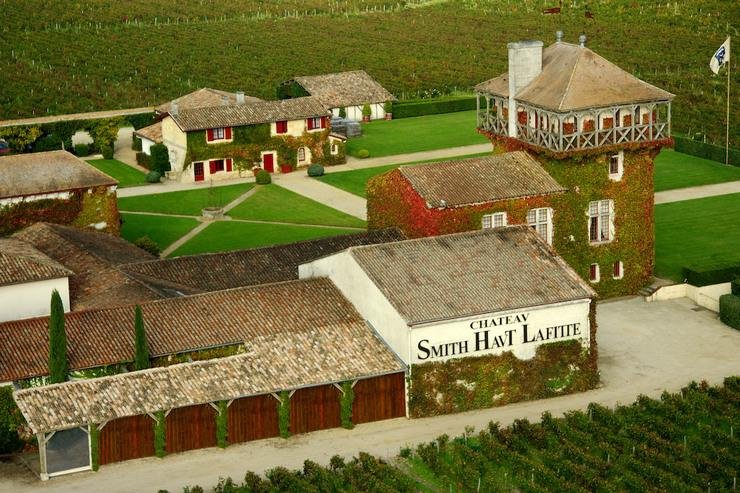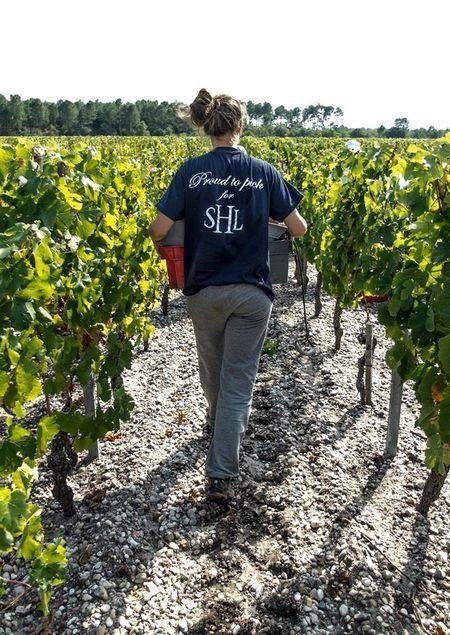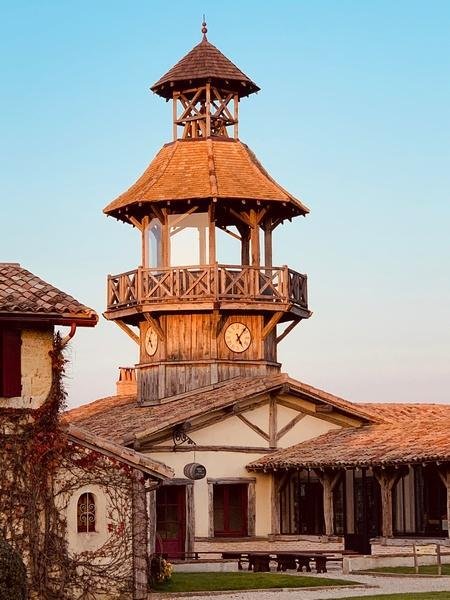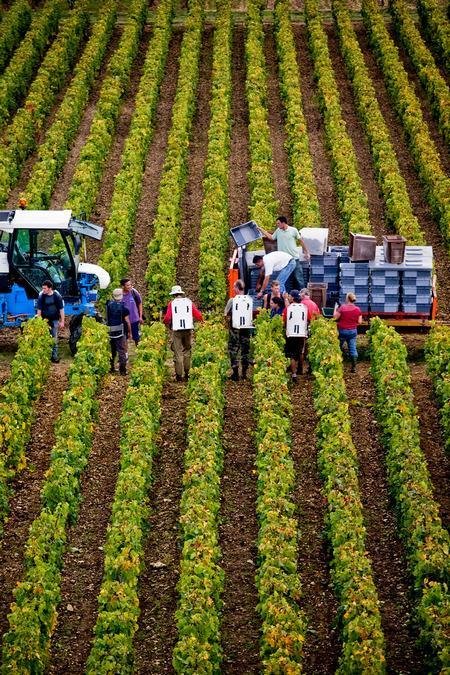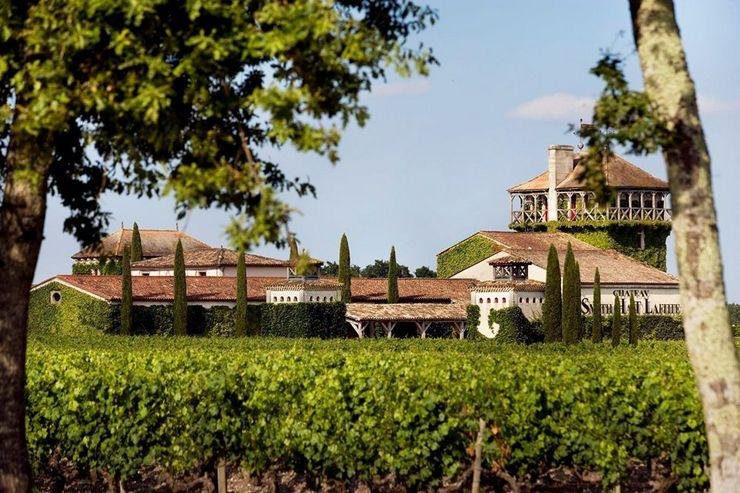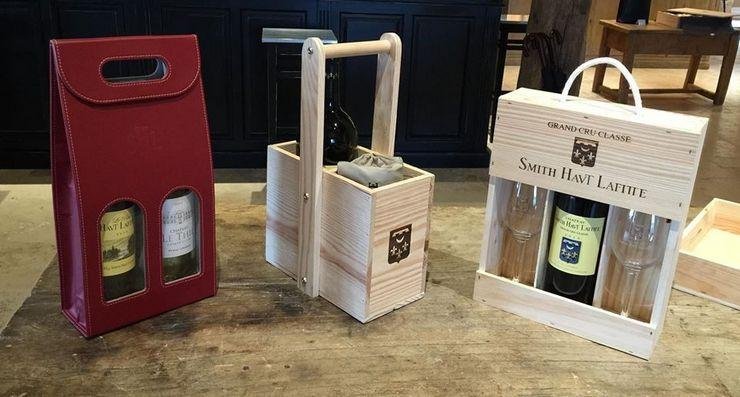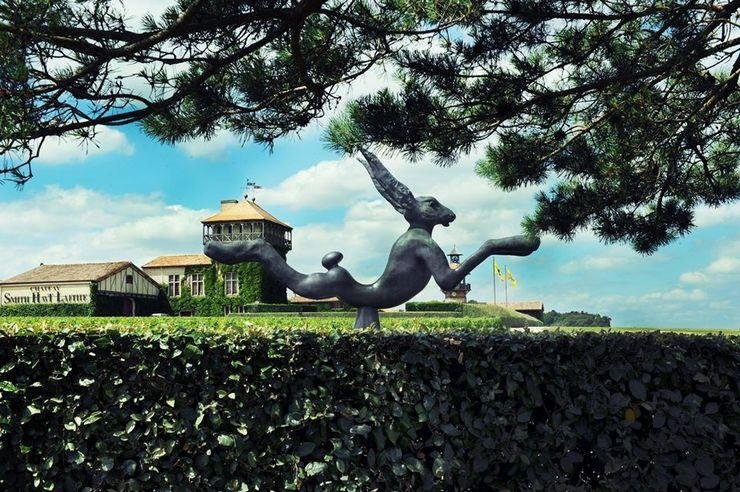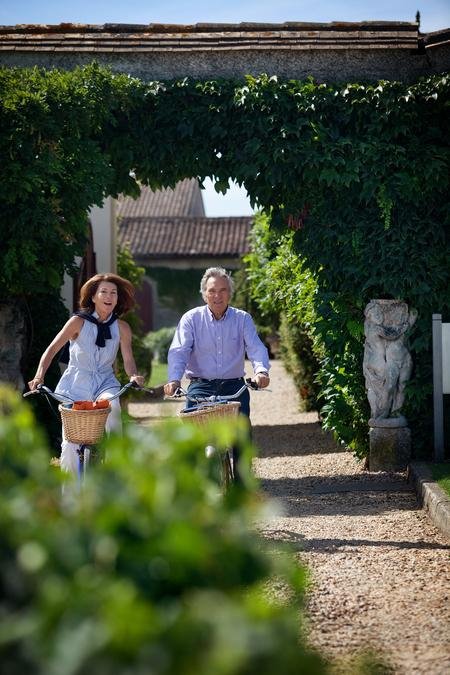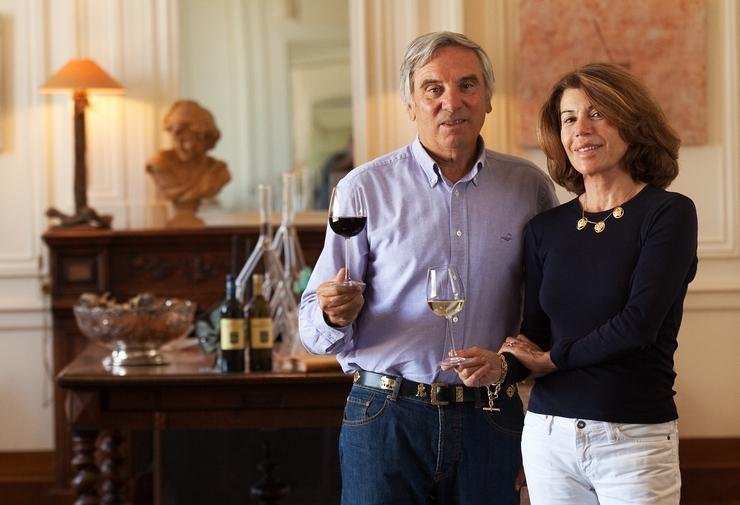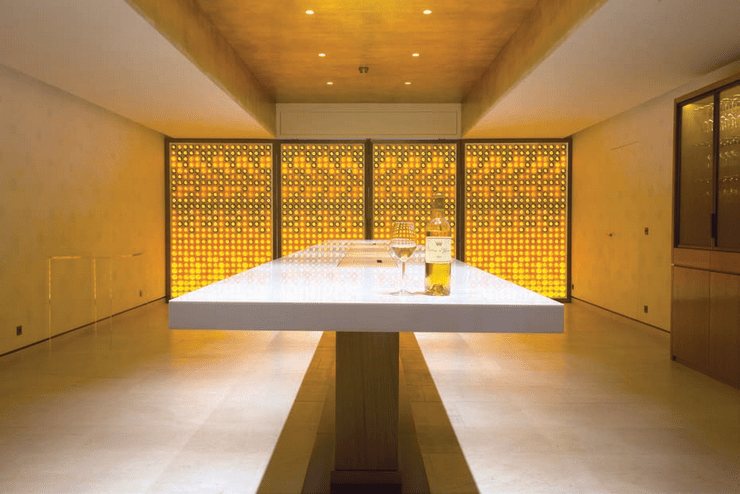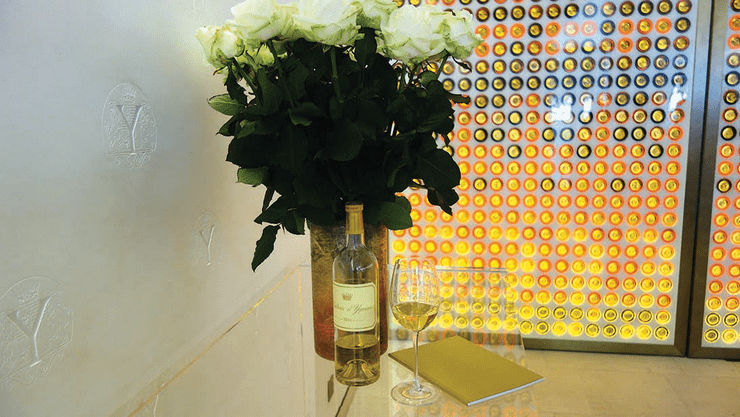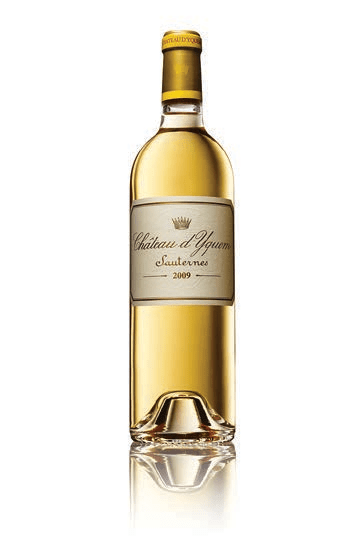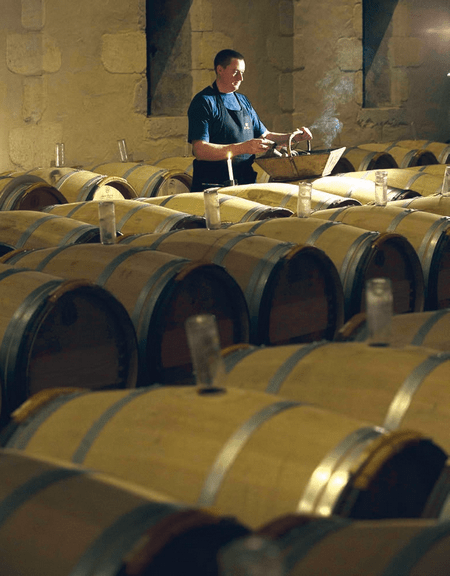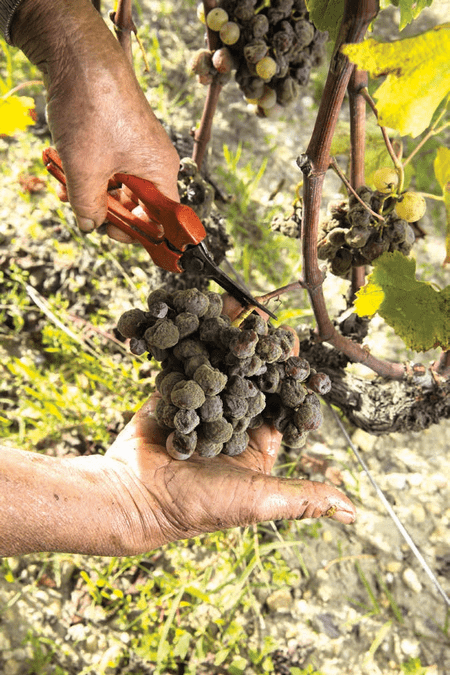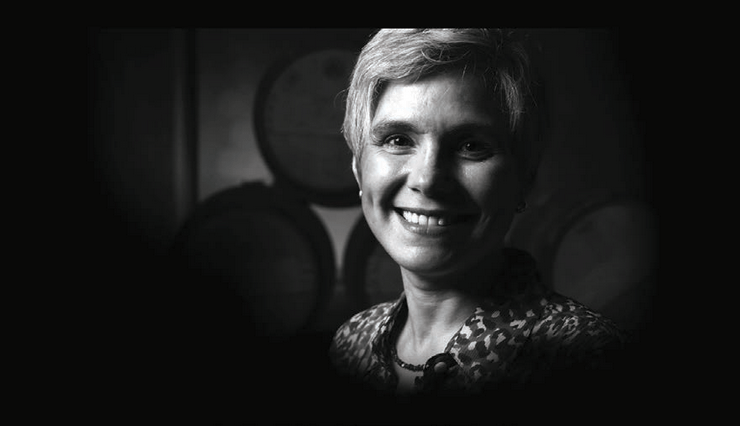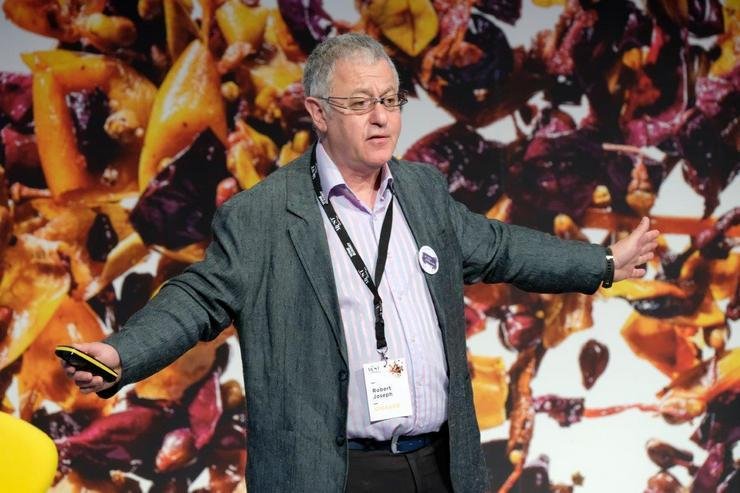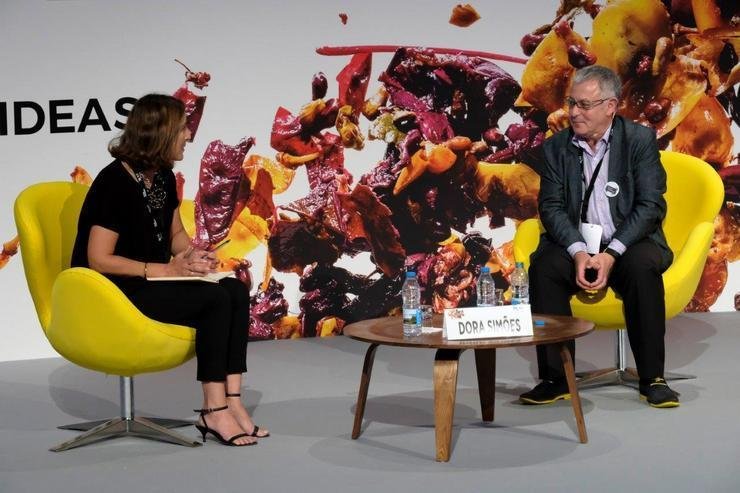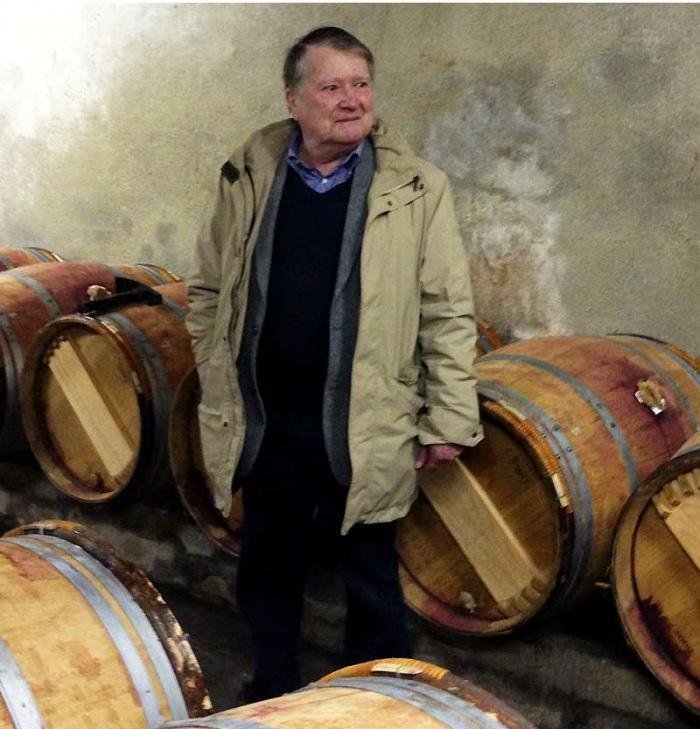Dany Rolland: «I married Pomerol when I married Michel»
Danу Rolland, one of the most talented and respected oenologists in the world, shared her working principles in the wine business, her memories, experience and own winemaker rules. About personal and professional – in an exclusive interview for D+.
D+: Mrs. Dany Rolland, before becoming a successful student of the Faculty of Oenology at the University of Bordeaux and graduating from it, you received a medical education. That was your parents’ decision? Who were they? Why did you change your profession and decide to connect your life with wine?
Dany Rolland: No, medicine was a personal choice until my parents preferred pharmacy. A real vacation for me. I studied for 2 years and in 1968, due to the student’s revolution of May, we didn’t pass the exams. In the same time, some friends were studying pharmacy but also oenology because their parents had officine in the countryside. I ask what does mean Oenology? At this time, I didn’t really drink wine, but the chemistry in between the grape and, at the end the wine was a very interesting subject and a way for me to try to understand this adventure, unique for a fruit, to start as a fruit and finish as a cultural drink, which cross the time, and give so much pleasure and inspiration.
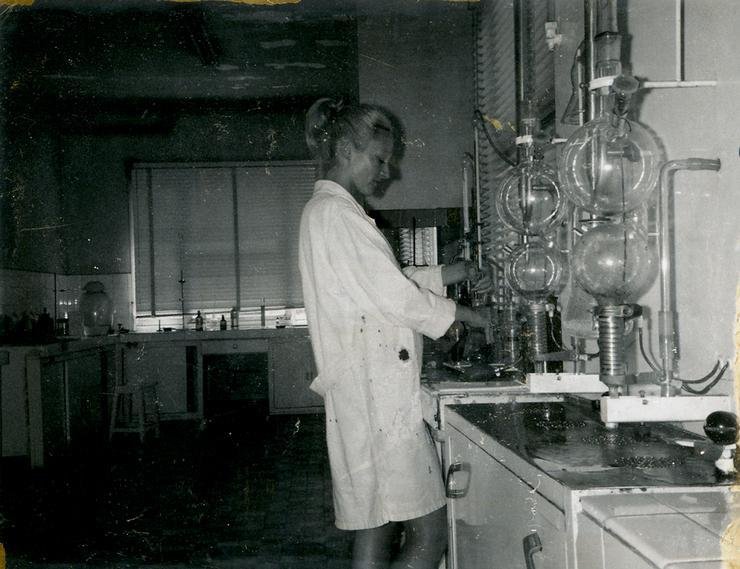
Dany Rolland in lab in the 1980s
D+: Who is the one who had impacted you the most in your development in the wine industry? (about one of the mentors, I think I guess )
D.R.: My family was not in the wine business, and I met during my studies my future husband Michel whose parents were owners of vines for 7 generations. At that time, our mentor was one of our professors: Emile Peynaud.
D+: Having studied your biography, it seemed that some twists in your life happened just lightning fast. Remember, please, which of these events has become the most significant for you and how they changed your life?
D.R.: As oenologists, we started in buying a laboratory, one of the most renowned of Gironde. We started with bad or not great vintages from 1973 to 1981. 1982 was the start of a great story for Bordeaux, with also the fact to meet Robert Parker since 1983. And also during the 80th, the first proposals of consulting outside for Michel: California in 1987, and Argentina in 1988.
D+: Let us recall Catherine Péré-Vergé – a legendary figure in Pomerol. Please tell us about your friendship – if I am not mistaken, largely thanks to meeting you, Catherine started to make wine in Pomerol. What has Catherine changed/brought to your professional life?
D.R.: Catherine Péré-Vergé was for us, Michel and I and our daughters, a wonderful friend. We were very close when she decided to invest in Pomerol starting with Ch. Montviel. We have also a personnel partnership: at this time she was a co-owner of Cristallerie d’Arques, and on the market, there was no glass for tasting and drinking that was really acceptable. We decided to create one: I tasted a lot of wines in different glasses and organized a “cahier des charges” to design one with all the qualities we were expecting. And her company made the glass called Oenologue”. It was 25 years ago. After we were also very close when we decided to invest in Argentina and she was the first to say Ok, Go.
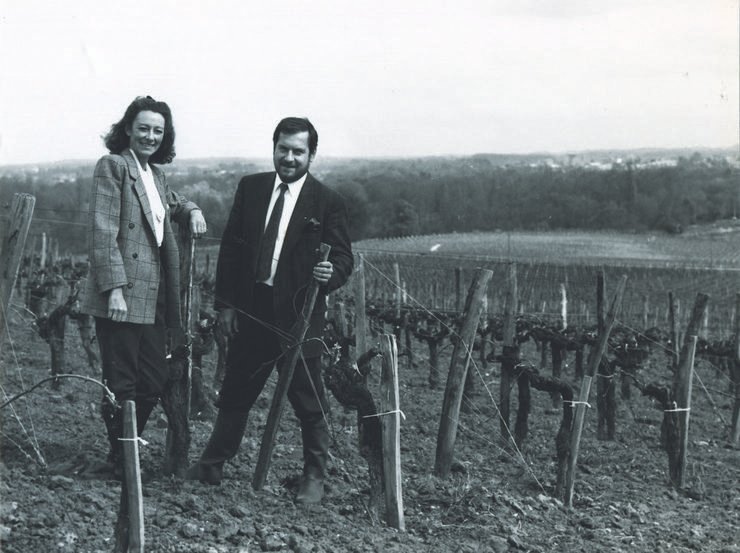
Dany and Michel in Château Fontenil, 1986
D+: In 1997 you moved to Château Fontenil – were you interested first in Château, and then in the vineyard? As far as we know, the vines of the Château are 45 years old – did you keep everything or did you change some?
D.R.: At this time, we were living above the lab in Libourne. That was easier when daughters were going to elementary school. But we needed space and we were looking for a house in the countryside. We found Fontenil, with 10 hectares of vines around. Why not? We were knowing very well this appellation of Fronsac, loving the soils and landscapes, less expensive than Saint Emilion, but with a lot of similarities. Now there are 71 producers in Fronsac covering 840 hectares and in Canon Fronsac – 33 producers covering 280 hectares. We bought in 1986, everything was wrong, house, cellars… a lot of works! The house was in a derelict state; everything had to be replaced, but the view over the valley was superb and… seven hectares of vines were also for sale – historically attached to Château Le Faure Haut-Normand.
The overall picture, together with the well, resembled the quaint corner of a little village. This place had a soul, but needed a body to accompany the soul. That would be the veritable challenge and the work of many years’ labor as well as immense effort and at times sacrifices. But vines were in good condition, old and interesting to make good wines. Regarding the vines, overall, they are on average older than 40 years. Some of them do not have a precise date noted on the grape variety declaration: they were planted prior to the 1950’s.
In 1997 after construction and renovation work over a three years period, we finally moved into the house for Michel’s 50th Birthday (December).

D+: We know that most of your vines are Merlot, is it true that to work with this grape variety is very simple?
D.R.: I don’t understand what you mean by “simple”, because like Pinot Noir, these two grape varieties need soils, climate and much more care than Cabernet Sauvignon which can grow anywhere in the world.
D+: What is your favorite variety in principle – if you look globally, without reference to France?
D.R.: My favorite variety is merlot because I “married” Pomerol when I married Michel, but I love also Cabernet Franc in Bordeaux and Syrah from East France, and so many good wines with so many varieties, as Malbec in Argentina.

D+: What can you say about a permission to cultivate Petit Verdot in Pomerol as a way to adapt to climate changes?
D.R.: In Medoc Petit Verdot is used in very small percentage, to complete blend cabernet sauvignon and merlot, but I don’t think it has a real interest in Pomerol for the blend and specially concerning the climate.
D+: Which vintages of Château Fontenil are the most iconic for you?
D.R.: 2000, 2001, 2005, 2009, 2010, 2015, 2016, 2018.
D+: You are involved in all wine making processes at Château Fontenil. Tell us please about Château Fontenil wines. Does Mr. Michel Rolland take part in the wine production processes, help you? Or is it exclusively your project? Why Château Fontenil wines have just such a system of vinification: with a whole bunch, fermentation and aging. Apparently, the decision came as a result of many years’ experience?
D.R.: I am more at the Château than Michel who travels more, but all the decisions are taken together, and now with our daughters who love to work with us for blending, communication, or others subjects: Fontenil is a family home. The real technological evolution at Château Fontenil began in 1999-2000. Construction of a new barrel cellar, which also contained 3 oak vats of 60 hectolitres – a folly for the appellation – but Fontenil was worth it fully! Installations in the vinification cellar: stainless steel vats of 57 and 80 hectolitres in capacity, all equipped with reversible thermo-regulation. Using adapted crates (baskets) for grapes – double sorting tables, before and after destemming. Modernising and decorating of a tasting room and guest rooms for our clients and journalists.
From 1999 to 2010, practically only good vintages, a quality revolution! In each one of the parcels the selections are carried out with more and more precision. Each batch of grapes – hand-picked into small crates at optimum ripeness – is sorted before and after destemming, and then vinified separately (as whole berries or crushed or even whole bunches) in the wooden vats, with manual punching down, or in the stainless steel vats, with the gentlest possible pumping over. After 6 to 8 days of cold stabilisation, follows a period of long maceration (up to 40 days), which resembles an infusion more than an excessive extraction. All fermentation takes place with indigenous yeasts and without any additives; BIO without shouting about it from the roof tops. Here, material has to be mastered; the tastings and the analytical controls are both numerous and continuous. Half the new wine is run off into new oak barrels, while the must is still warm, which allows the malolactic fermentation to get under way smoothly. In the traditional way, without neglecting the advantages of high technology equipment, a delicate pressing is realized. This is perfected thanks to a JLB vertical press, which ennobles and enhances the marc juice, only too often excluded from the blend.
In 2008, the decision is taken to vinify exclusively in new oak barrels for the “Défi” and part of “Fontenil”.
D+: Could you tell us about the wine Le Defi de Fontenil – what was the story with the plastic sheets, that were protecting the vineyard from the rain, and that is why the vintage lost the right to belong to Fronsac appellation?
D.R.: The predominance of heavy and fresh soils (calcareous clay or Fronsac Molasses), combined with the fickleness of the meteorological conditions, both demand a certain knowledge and experience, as well as a daily dose of pragmatism, to temper the grape so that it can express the very best of itself. In 1999, therefore, a certain initiative seemed to us to be judicious. The laying of plastic sheets on the ground between rows, in order to avoid the penetration of water, detrimental at the end of the “veraison” (changing of the colour of the grapes), to give the grapes the opportunity to mature more fully and harmoniously, particularly on the late ripening soils of Fronsac. The experiment was planned to stretch over three years, covering a surface of approximately 1.6 hectares of Merlot on two steep parcels. This in order to be able to reuse the same tarpaulins cut to size to fit the length of the rows. This experiment represented a certain investment. Thus, in 1999, the results proved extremely convincing. The tarpaulins had been put in place on 8th August and until 25th September – harvest time. Around 120 mm of rain had fallen. The grapes were in perfect sanitary condition and considerably sweeter with a better extractability of the anthocyanins and furthermore a more advanced maturity of the pips. The results were impressive and were confirmed by the quality of the wines produced from the protected vines. Nobody, in a position of authority, took the trouble to come and taste the wine and the produce of this experiment, was directly incorporated into the wine of Fontenil. In 2000, the experiment was repeated. Two days later after the tarpaulins installation, a letter was received from the INAO (Institut National des Appellations d’Origines). INAO ordering us to remove the tarpaulins immediately, under the threat that the wine from the concerned parcels would be declassified as “table wine”. No official explanation, but for the technical commission this procedure could susceptibly alter the terroir and furthermore, was unaesthetic. No study had been undertaken by their own services… and certainly no consultation or discussion before this arbitrary decision.
As we have always thought that it is better to carry out an experiment to its conclusion in order for it to be techni – cally exploitable (on the principle of scientific methodo – logy and correlation), we kept the tarpaulins in place. As a result, in 2000, we produced 8,000 bottles of table wine; in fact a very particular kind of special cuvee. The Fontenil Challenge was born, called “Le Défi de Fontenil”. We continued and renewed the experiment with the tarpaulins in 2001 then again in 2004, for the last time. Today, the “Défi de Fontenil” remains the “cuvee de tête” (the special cuvee of Fontenil) – without tarpaulins, and therefore, without any … artifice!), still a “table wine”, or since 2009, a “Vin de France”, in order to justify its name: a true “challenge”! No vintage mentioned – merely a batch number for each one.
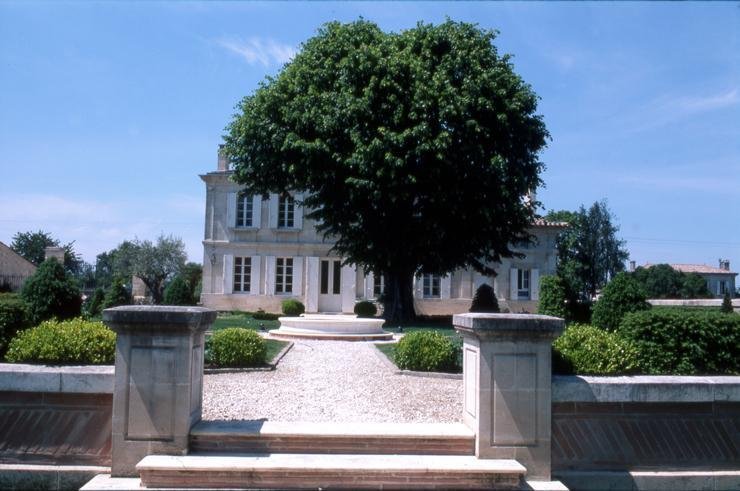
Château Fontenil
D+: They say that in Château Fontenil you have a secret garden. What is his mystery?
D.R.: Who are “they”? I have a simple house called Château, like many in Bordeaux, but I love details and I am passionate and perfectionist with all about house, garden, vineyard. When I invite friends, I love lovely tables, flowers and table art, I try to make good food and serve great wines from all around the world… no secret weapon but pleasure and work.
D+: Oh, how we understand you! It seems that Pomerol, which gives the world the most status wines, is essentially very simple. Let’s say Christian Moueix states, that his Petrus is not a Chateau, as many incorrectly believe, but “just an old farmhouse.” And the owners of the famous Le Pin, Fiona Morrison and Jacques Thienpont, (with whom, as far as we know, you are friends) say that they are not the stars of the wine world at all, but only farmers. Can such an illustrious couple like you and Mr. Michel Rolland forget about fame, even among the virgin nature, and lead the life of ordinary farmers?
D.R.: Absolutely true, on Right Bank and specially in Pomerol that is younger in history regarding Fronsac or Saint-Emilion, houses are simple and people are not “Châtelains” but gentlemen farmers. But, above all we are oenologists travelling a lot with the life of people open to the world, not leaving all the year at home as owners are doing. Our life in Fronsac, it is very simple and peaceful.
D+: You have bought a number of outstanding wineries, some of them with partners. How did you select vineyards? Have you ever heard the advice: to look at them hen the rain falls, in the most difficult season, perhaps in winter?
D.R.: We just «fell in love» with some places, people or terroir during all of our travels. We started with Argentina, and now it’s our unique best project with Fontenil. We have made personnel wines in South-Africa and Spain with joint ventures, but now we focus, mainly, on Argentinian projects for outside.

D+: What is very important for you in this process – do you want to help people close to you, you are attracted to new terroirs, opportunities? Creating great wines in different parts of the world, in an unfamiliar climate – it should be extremely difficult. Please tell us about the most interesting projects of recent times.
D.R.: Regarding the consulting it’s always a challenge and more in difficult countries where climate, soils, knowledge …are not at the top like India, China…but when people want to learn and make good wines, it’s always a pleasure: good doesn’t mean great; for a great wine, we need to have all the qualities of terroirs, work and good professionals in each production sector.
D+: Do you work only with dry wines or there are sweet ones too? In what type of wines are you more interested as a winemaker?
D.R.: White and red wines, very few sweet or sparkling wines.
D+: You and Mr. Michel Rolland are known as the perfect “wine couple.” Common interests in oenology simplify life together or complicate?
D.R.: We have been working together for 47 years… Difficult to say it is or was complicate. Each of us has his own personality but we are very complementary.

D+: Do each of you have your own favorite technology, “specialization”. Let’s say, if you meet the challenge – one of you makes the decision on fermentation, and another sets the aging algorithms? Are there any disputes? Whose word is the law?
D.R.: Michel is more THE consultant and I am more at home, looking at laboratory and properties, but we are looking in the same direction regarding technologies, no challenge.
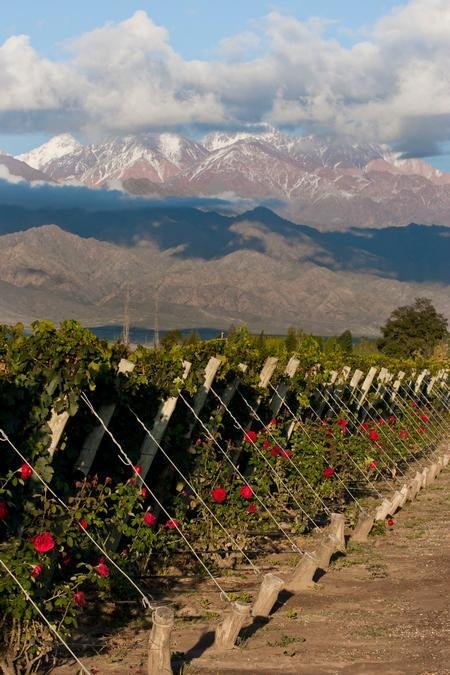
Val de Flores in Argentina
D+: Do you work with so-called natural wines, wild yeast? What do you think about this direction, as well as organics and biodynamics?
D.R.: Of course we worked with clients who are in organic or biodynamic culture and winemaking. It will be the new challenge to protect the Earth. But the final decision in this way must be taken by clients not by us. Personally, right now, we are in organic farming for our Val de Flores in Argentina. And with wild yeasts everywhere, except if a climatic or special problem require to add others.
D+: The company under the new name Rolland et Associés now will be managed by a team of oenologists, like-minded people of Mr. Michel Rolland. You and Mr. Michel Rolland now retain only a membership on the board of directors. What is the reason for this decision? Please comment on the situation.
D.R.: It’s the logical and normal evolution for a company as ours. Our oenologists have been employees, and after 20 years working together, it’s normal to give them shares for the future, and evident that they have more responsibilities, but nothing changes regarding work, and we are always present in the company business.
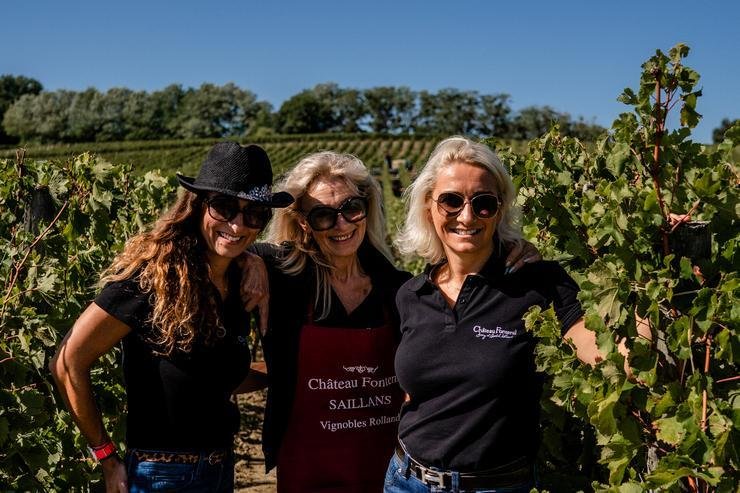
Dany Rolland with daughters Marie and Stephanie
D+: You are a shareholder of Rolland Collection Limited, a company that sells wines produced by all Rolland wineries. How is this business developing now, in which countries are there representatives/operators? How are your wines priced and by whom? Is there a single principle for all wineries?
D.R.: Rolland Collection is a family business and it’s our oldest daughter: Stéphanie, who is in charge of management. But all fares are discussed and fixed regarding the cost of the production and the situation of the market for all wineries. For Fontenil which is present on Bordeaux place market, Rolland Collection operates in same way than the others wine merchants.
D+: How do you feel about the en primeur system, its pros and cons for the winemaker?
D.R.: The en primeur system exists since a long time, it’s not perfect but it’s a good system for the owner and normaly for people who buy the wine. At this level, no problem for the winemaker: his work about the vintage is almost done.
D+: Could you recall the moment when you tasted the wines of Argentina for the first time? What was your first impression? As far as we know, the invitation from the winemaker Arnaldo Etchart was quite spontaneous for you. What prompted you to agree?
D.R.: It was in 1988, and Arnaldo Etchart called us to help him to make better or different wines that he made, because he wanted to sell on American market. We spontaneously accepted to visit and know/discover Argentina; and we fell in love with the country, the people, the landscapes, the possibilities to make good wines was the second challenge after California.
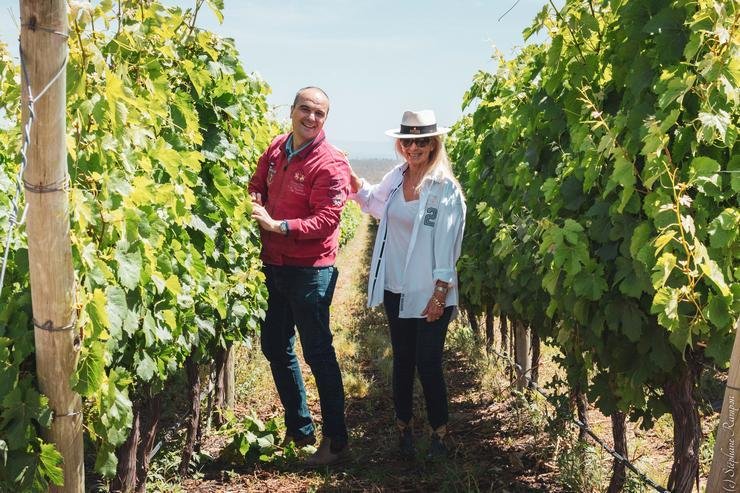
D+: What wines do you make today?
D.R.: We try to understand all the terroirs in all altitudes and latitudes and to adapt, our knowledge with a good viticulture. It seems we make good wines that really attract the interest of drinkers, and looking like their origins.
D+: You are pleased to take up less iconic wineries for consulting – in the USA, South Africa, Argentina, Brazil, Chile, Spain, Italy and Morocco. Have you ever thought about Eastern Europe? Have you ever discussed with Mr. Michel Rolland what country is interesting in this part of the world? What can attract you?
D.R.: As consultants and with the curiosity needed for that, we are interested with all new projects, challenge but time is not extended and we have to make some choices but we found very good places and possibilities in Bulgaria and especially around Black Sea, some in Russia (visited by a collaborator but in standby due to the virus) we work in Turkey, Armenia, Croatia, Greece…)
D+: Each country has its own peculiarity – culture, mentality, attitude to winemaking. In which country and with which terroir was the most difficult/easiest to work with and why?
D.R.: Impossible to answer, we are very open minded and have very good clients in each part of the world, and very good friends too. Of course the challenge is not the same in California than in Bulgaria, making wines at 1000 $ or less than 10. Anybody in the wine business knows that.
D+: Where would you like come back?
D.R.: In our life, we have never been in Australia or New Zealand, but it’s not a pain, a small regret, life is too short, we need another one.
D+: What can you advise to your colleagues’ winemakers from France and other countries, on how to minimize losses from a pandemic and keep sales? What steps have you taken?
D.R.: If you speak about the Covid pandemic as it’s not possible to travel, we try to organize tastings/blends by video conferences. Moreover, we speak very frequently with the people of wineries or vineyards to be always in touch and to have the best reactivity.

D+: Please name the most advanced technologies, equipment -perhaps even not yet tested by you, which you would be interested to apply in production?
D.R.: Until now, a lot of evolution in high technologies was made and almost a lot of observations and questioning regarding the plant, variety, density… the future will be in the vegetal and vineyard, to have the best quality of grapes, and also in the protection of the plant and soils to find the best combination of production: quality/quantity/safety.
D+: What trends could you highlight in the wine world for today? How, in your opinion, should be the ideal modern wine – red, white? With what manufacturing techniques could we achieve for today ideal performance of wine? And what kind of aging containers do you prefer – cement, steel, oak?
D.R.: The challenge is to preserve the best taste of a grape in a particular place, to respect the identity of the wine, trying to be very gentle with it, using the right way of winemaking and giving the best content for aging: but it depends on which type of wine you want to make: simply for refreshing, easy to drink for everyone or a wine who can age and pass through the time. We try to find the best way for that in viticulture and to use the good material for each of this kind of production: freshness with steel, more complexity with cement with longer maceration, the same in oak for aging, looking at the time and the age of the barrels.
D+: Do you have any students-winemakers? If so, how long does the study last and what is the methodology, how does the study go?
D.R.: No, we can have some in the wineries during harvest to help and study but it’s not on our entire responsibility.
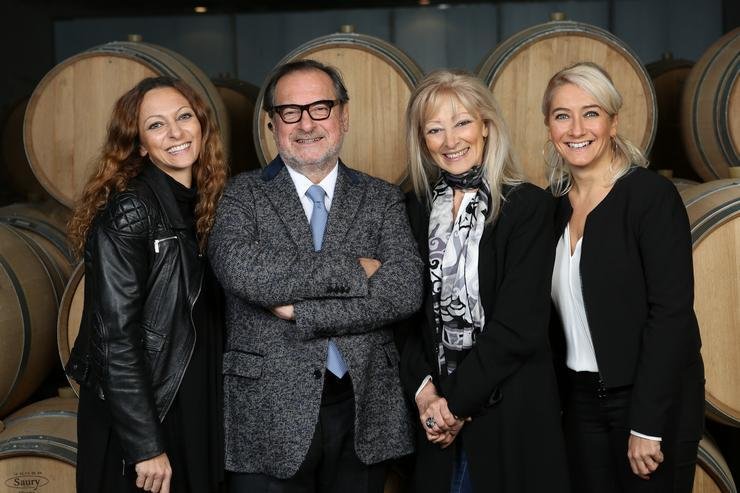
D+: We understand that you are the highest class consultant and your advice is paid accordingly. Nevertheless, we dare to ask a question and we will be extremely grateful if you answer: the winemaking of Ukraine is only developing now, in difficult conditions and practically (due to the loss of Crimea) without autochthonous varieties that could impress the world. What would you advise Ukrainian winemakers – in what style would it be worth making wines to stand out on the world stage and occupy your own niche?
D.R.: I don’t know perfectly this situation, but the only advice would be to try to understand their terroirs and to plant with a good viticulture, the varieties the more adapted to the climate and soil, not exclusively indigenous ones. Each variety has the taste of its terroir. And after, they have to choice the best technology to produce wines, in quality not in quantity.
D +: Thank you very much for answering all our countless questions and for your time!
Drinks+ Blitz:
With so many projects and, apparently, relocations – how is your standard working day goes?
Before pandemic time, it was a mix between laboratory, office, family, Fontenil and travelling for representations or Argentina: second home. Now, it is more static, and with my age, I lift the foot, looking more on the properties than the laboratory and consulting. Michel continues to do that very well, always travelling (except now) but looking to his business with Bordeaux, Spain or Italian’s clients.
How do you relax, what brings you joy?
I like to read, to look for antics, to spend time with my grandchildren, to play golf (but I don’t take enough time) to relax in our vineyards, to cook, to receive friends, to make a good and lovely table…
Your favorite restaurant\dish\wine.
I love a lot of different “cuisine”: exotic or traditional, Indian or Thai food or “fusion” in Peru or Argentina, Chinese also. I love as fish and shellfish as much meat. For wine, it’s impossible to make a list: young or old wines but good, all varieties.
Your favorite holiday, how does it go?
I love travelling, discovering old and historical places, or a nice beach. But, above all spending holidays with my children in Arcachon, where I use to go since my small childhood.
What’s the most important thing in your life?
My family and making wines.
What country have you never been to but would like to visit?
A lot! Bali (Indonesia), Vietnam, Jordan, and many others.
What are the immediate plans for Dany and Michel Rolland?
Giving our children (daughters Stephanie and Marie and their five children) a good succession, to interest them in all the wine business, to inculcate them all the experience, enthusiasm, curiosity, and respect, it’s not a very original challenge, but we hope to be safe to do that, and keep going on until the last trip…
Dany Rolland, one of the most talented and respected oenologists in the world told about personal and professional in an exclusive interview for D+.





